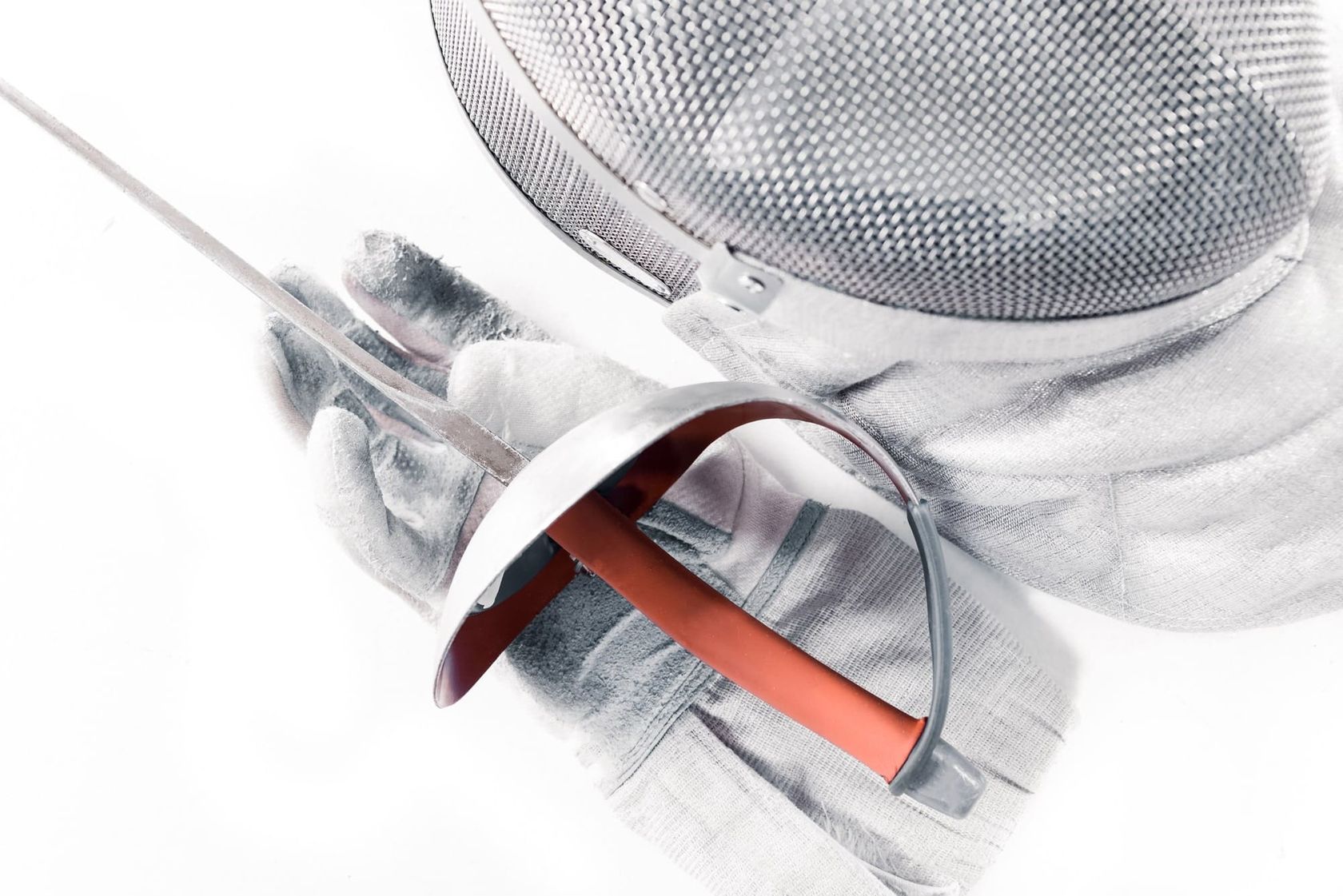At that moment, the Ukrainian athletes had already left behind the Russian and US women’s teams. The competition turned out to be a true test for all its participants. With the score at 44:44, Ukrainian fencer Olha Kharlan made the victorious jab, forever recording the names of our fencers in the history books as the winners of the debut Olympic women’s team sabre event. Together with her fellow national team members – Elena Khromova, Olha Zhovnir and Galina Pundik – Kharlan became a national hero. Since then, fencing has become one of the most successful sports in Ukraine. In 2021, six Ukrainian female and male fencers will compete in the Tokyo Olympics, including the legendary Olha Kharlan.
Peculiarities of fencing
In the memorable final scene of the popular Russian film adaptation of The Three Musketeers, the four main characters say:
- How many muskets do we have?
- Four!
- How many swords?
- […] One for all, and all for one!
The musketeers and their swords are a reminder that the sport of fencing is a modern evolution of a bladed martial art that has been practiced since the 13th-14th centuries. Today, the Olympic Games feature three types of fencing:
- foils
- epees
- sabres
To win, a competitor must score a certain number of touches or blows on their opponent. Each fencer wears a specialised electrically conductive garment and mask connected to equipment that automatically registers the score. The fencing foils, epees and sabres are not simply made of steel: they are sophisticated pieces of equipment with wires inside running to the tip of the blade, which has a special button that closes the electrical circuit when a hit is scored.

The main difference between the three disciplines mentioned above is the shape of the weapon and the method for defeating one’s opponent. The foil and epee are thrusting weapons with four and three edges, respectively. It is more difficult to score a hit with an epee, as it bends more easily and the contact sensors are adjusted to only detect a stronger thrust. The sabre is a thrusting and cutting weapon that delivers both jabs and slashing blows. And yet, the sabre and foil have something in common. Both disciplines only allow hits above the waist. Meanwhile, in epee fencing, the entire body except the back of the neck is a valid target.
Fencing steel
The ringing of metal heard during fencing contests is not just a sound effect. Even in the sport, the blades are made of real steel: sharp and dangerous. Before the early 1980s, they were made of carbon steel. However, this material ages quickly, allowing microcracks to appear on its surface, which can cause the tool to break, leaving only a sharp fragment in the hand of the fencer. This led to a tragic incident at the 1982 world fencing championships. Since then, the rules governing which material should be used for weapons at professional contests have been modified.
Today, the International Fencing Federation (known by the French abbreviation FIE) requires the steel for foils, epees and sabres to be of a maraging grade (a portmanteau of ‘martensitic’ and ‘ageing’). This includes such steel grades as 200, 250, 300/300A and 350 under the MIL-S-46850D military standard, which is the equivalent of EP-637 (03N18K9M5T) high-strength or similar steel grades. When undergoing thermal treatment, these maraging steels acquire high strength and viscosity without changing their ductility. In other words, they maintain their thrusting and cutting properties 10 times longer without cracking or other defects. Only such epees, foils and sabres can be marked with the FIE stamp of approval – known as homologation – that allows a fencer to be admitted to official competitions.
However, maraging steel is more expensive than carbon steel, as it is an alloy of iron and non-ferrous metals:
- nickel (17-19%)
- cobalt (8-12%)
- molybdenum (3-5%)
- titanium (0.2-1.6%)
This makes the steel much lighter. For this reason, maraging steel grades are used not only in fencing, but also in the aerospace industry.
However, fencers who practice actively must replace several blades a month. This can strain the wallets of novices and amateurs. To help with this, leading fencing blade manufacturers offer more basic, cost-effective grades of metal for the production of foils, epees or sabres. They are used to produce common blades made of spring steel grades such as 60C2A (similar to 60Si7 under the European EN10089 standard) and 45XH2MFA (46SiCrMo6). However, they must be cared for more attentively and are not allowed to be used at international competitions.

How blades are made
Fencing weapons are produced by special-purpose facilities that have approvals and permits from sport federations. First, the steel for the sabres is shaped into bars with a diameter of 14 mm. At the armoury, the semi-finished products are cut into billets of the required length, heated to 1,150°C, and formed into a tapered feedstock on a screw-rolling mill. After reheating on a lengthwise rolling mill, the billet is made into a V-shape so that the wires can be run inside. Before final assembly, sport sabre blades are ground, finished and checked for defects.
Some manufacturers additionally use shot blasting and sand blasting. Blades can also be colour-coated to improve their appearance, increase their corrosion resistance and prolong their service life. Finished blades are covered with a transparent grease to protect the weapon from corrosion during transport.
This allows epees, foils and sabres produced in Ukraine to reach customers thousands of kilometres away in flawless condition. Ukrainian fencers can also participate in prestigious international competitions with blades made on other continents, and courageously fight for medals in the Tokyo Olympic Games or any other competitions around the world.
